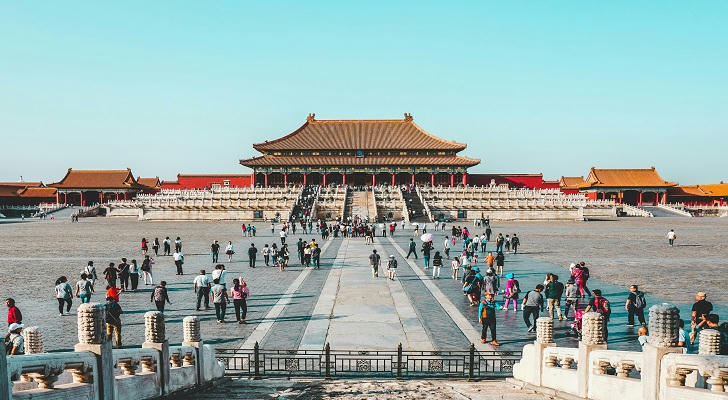Are You Ready to Explore the Rich Culture and History of China with Your Family?
Picture your family standing atop the Great Wall, marveling at terracotta warriors in Xi’an, or savoring soup dumplings in Shanghai—all in just one week! China’s blend of ancient wonders and modern marvels makes it a thrilling destination for families. But planning a trip here can feel daunting, especially with language barriers and cultural differences. Fear not! This guide unlocks the secrets to a seamless adventure, from kid-friendly itineraries to budget hacks and survival phrases.
Ready to trade "What if?" for "We did!"? Let’s dive into your ultimate China family travel plan.
Planning a family trip to China? This guide will help you navigate the must-see destinations, delicious foods, budget considerations, and language tips for a smooth adventure!

🗺️ Itinerary Highlights
Days 1–3: Beijing
- Forbidden City: Explore the vast imperial palace and learn about China's rich history.
- Great Wall of China: Hike along one of the most famous sections, like Badaling or Mutianyu.
- Tiananmen Square: Visit the iconic square and the National Museum of China.
- Peking Duck Dinner: Enjoy a traditional meal at a renowned restaurant like Quanjude.
Days 4–5: Xi'an
- Terracotta Army: Discover the incredible archaeological site of thousands of life-sized soldiers.
- Xi'an City Wall: Rent bikes and ride along the ancient city wall for stunning views.
- Muslim Quarter: Sample local street food, including lamb skewers and biangbiang noodles.
Days 6–7: Shanghai
- The Bund: Stroll along the waterfront and admire the skyline of modern Shanghai.
- Yu Garden: Explore the beautiful classical Chinese garden and nearby bazaar.
- Shanghai Disneyland: Spend a day at the magical theme park, perfect for families.
🍜 Must-Try Foods
- Beijing: Peking Duck, jianbing (Chinese crepes), and zhajiangmian (noodles with soybean paste).
- Xi'an: Roujiamo (Chinese hamburger), yangrou paomo (lamb soup with bread), and dumplings.
- Shanghai: Xiaolongbao (soup dumplings), shengjianbao (pan-fried buns), and sweet and sour spare ribs.
💵 Estimated Budget (Per Person)
- Flights: $800–$1,200 (round-trip from the U.S.).
- Accommodation: $50–$150/night for mid-range hotels or family-friendly Airbnb.
- Food: $10–$30 per meal (street food to mid-range restaurants).
- Transport: $100 for domestic flights or high-speed train tickets between cities.
- Activities: $20–$100/day (entrance fees, bike rentals, Disneyland tickets).
- Total: $2,000–$3,000 per person for 7 days.
🗣️ Language Tips for Non-Chinese Speakers
- Use Translation Apps: Download Google Translate or Pleco for easy communication.
- Learn Key Phrases:
- 你好 (Nǐ hǎo = Hello)
- 谢谢 (Xièxiè = Thank you)
- 请问厕所在哪里? (Qǐngwèn cèsuǒ zài nǎlǐ? = Where is the bathroom?)
- English-Friendly Areas: Major tourist spots often have English signage, and many young people in cities speak some English.
- Carry a Phrasebook: A small phrasebook can be handy for quick reference.
🚆 Travel Tips
- Transportation: Use high-speed trains for intercity travel; they are efficient and comfortable.
- Cash vs. WeChat Pay: While credit cards are accepted in many places, having cash (RMB) is essential for small vendors. Consider setting up WeChat Pay for convenience.
- Cultural Etiquette: Be respectful in temples and public places. It's customary to greet with a slight bow.

FAQs
1. Do I need to speak Chinese to travel in China?
No! Major cities like Beijing, Xi’an, and Shanghai have English signage in tourist areas. Use translation apps like Google Translate (download offline Chinese packs) and learn basic phrases like "xièxiè" (thank you). Many hotels and restaurants in tourist zones also have English-speaking staff.
2. Is the Great Wall of China suitable for young kids?
Yes! Opt for family-friendly sections like Mutianyu, which has cable cars and gentler slopes. Avoid crowded areas like Badaling during peak hours. Bring snacks, water, and sunscreen—facilities can be limited.
3. Can I use credit cards everywhere, or should I carry cash?
Carry RMB (cash) for small vendors, markets, and rural areas. Credit cards are accepted in hotels, upscale restaurants, and malls. Set up WeChat Pay or Alipay for convenience, but note these require a Chinese bank account.
4. How do I navigate transportation between cities?
High-speed trains are fast, affordable, and family-friendly. Book tickets in advance via Trip.com (English interface). For shorter trips, use Didi (China’s Uber) or metro systems in major cities.
5. What cultural etiquette should families be aware of?
- Avoid pointing with your index finger—use an open hand.
- Teach kids not to stick chopsticks upright in rice (it symbolizes death).
- Remove shoes in temples or traditional homes.
- Tipping is not customary in China.
Conclusion
Final Thoughts: China is a land of rich history, vibrant culture, and delicious cuisine. With this guide, you’re ready to embark on an unforgettable family adventure. Pack your bags, prepare your taste buds, and get ready to explore the wonders of China! 🌏✨
From the Forbidden City’s grandeur to the buzz of Shanghai’s Bund, China offers memories that’ll last a lifetime. With this guide, you’re equipped to navigate bustling markets, conquer the Great Wall, and slurp xiaolongbao like a pro. Pack light, embrace the chaos, and remember: the best family stories begin with a leap into the unknown.
